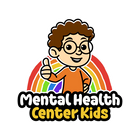|
Key Takeaways:
- ADHD and bipolar disorder share similar symptoms like impulsivity, poor organizational skills, and an inability to focus.
- Both conditions can result from genetic factors, brain structure differences, and traumatic experiences.
- Children can develop both conditions simultaneously and may require a tailored treatment program.
|
When you notice your child struggles with mood swings, impulsivity, and an inability to focus on anything, you may wonder whether they have ADHD vs. bipolar disorder. While these share many symptoms, they are fundamentally different and require highly specific care.
Learn how to distinguish between these two disorders and understand how they affect your child’s personal and school life. This article will also provide a closer look at the differences and similarities in causes, symptoms, and treatment options.
An Overview of ADHD in Children
Attention-deficit hyperactive disorder (ADHD) in children affects brain activity, attention span, and self-control [*]. Children with ADHD are often impulsive, hyperactive, and have trouble concentrating.
Symptoms of ADHD include:
- Having trouble focusing on a task
- Having too much energy
- Struggling to listen actively
- Struggling to organize tasks
- Being easily distracted by environmental factors
- Forgetting to accomplish daily responsibilities
Whether inattentive or impulsive, ADHD can affect a child’s school life and interpersonal relationships. Occasionally, symptoms lessen with age but require early intervention to see improvement as they enter adulthood.
Compared to girls, ADHD in boys is twice as likely to occur. However, ADHD in girls is more likely to cause problems with attention. Boys also tend to display hyperactive symptoms, while girls may seem more withdrawn, inattentive, and struggle to concentrate.
An Overview of Bipolar Disorder in Children
Bipolar disorder in children can cause severe irritability and frequent mood episodes. This lifelong mood disorder can cause manic and depressive episodes that occur weekly, monthly, or even yearly.
When children with bipolar disorder experience mania, they experience extreme changes in mood, energy, and activity levels. Children with depressive symptoms primarily experience irritable moods and even suicidal ideation.
ADHD vs. Bipolar Disorder in Children
ADHD and bipolar disorder can co-occur in children, as they manifest similar symptoms like mood swings, impulsivity, and a lack of control. However, these conditions are fundamentally different and require comprehensive approaches to diagnoses and treatment.
Here, we explore the key differences between ADHD and bipolar disorder in children.
Focus
ADHD and bipolar disorder impact focus in different ways. On one hand, children with ADHD may struggle with consistent attention, while children with bipolar disorder may experience episodic focus problems depending on their mood.
Let’s add some perspective—a child with ADHD may find themselves easily distracted in school settings and unable to focus on a single task. This inability to focus may not occur in children with bipolar disorder, especially when they’re in a euthymic state (a state of stability or “normalcy”). However, when a child with bipolar disorder is manic or depressive, they may experience racing thoughts and become unable to focus on one thing.
Overall, a child with ADHD has chronic persistent focus problems that can occur anywhere, including at home and school. In contrast, a child with bipolar disorder may have focus problems that fluctuate with their mood states.
Causes
The occurrence of ADHD and bipolar disorder is influenced by genetics, neurological factors, and a child’s living environment. However, the causes behind ADHD are more closely linked to brain function—particularly within the prefrontal cortex, which controls impulse and attention span [*].
In children with bipolar disorder, genetic predisposition is prominent. Children with parents (first-degree relatives) who have bipolar disorder are likelier to develop the condition [*]. Still, brain chemistry imbalances can influence whether a child develops bipolar disorder, as a lack of dopamine, serotonin, and glutamate can cause mood imbalances.
Environmental factors and triggers can also affect the likelihood of developing either condition.
Children who are exposed to stressful living conditions, trauma, or sleep disruptions are likelier to develop mood disorders, while factors like premature birth, low birth rate, or prenatal exposure to substances like drugs or alcohol are more likely the culprits behind ADHD [*]. Parents who abuse illicit substances can affect dopamine production in their children.
Symptoms
Symptoms of ADHD and bipolar disorder in children are eerily alike—sometimes even identical. In both conditions, emotional dysregulation is extremely common. Children with either condition cannot tolerate frustration well and can become highly irritable.
Other symptoms that might overlap between ADHD and mania include:
- Heightened mental and physical activity
- Manic irritability and low frustration tolerance
- Poor judgment and impulsivity
- Difficulties sleeping
- Distractability
The best way to differentiate between ADHD and bipolar symptoms is to determine the frequency of each symptom. Most ADHD symptoms occur repetitively or chronically, while bipolar symptoms may manifest depending on whether a child is manic or depressive.
For example, a child with bipolar disorder might be irritable and easily distracted when they experience mood episodes but normalize when they feel emotionally stable. On the other hand, a child with ADHD may struggle with inattentiveness on a daily basis.
Onset
Children with ADHD develop the condition early—between 3 and 6. The symptoms are consistent and lifelong, while bipolar symptoms are episodic and have alternating periods of mania and depression.
Conversely, people are commonly diagnosed with bipolar disorder in late adolescence or adulthood but can display symptoms earlier in childhood.
For both conditions, symptoms can intensify during transitional periods or after traumatic experiences. Both are prone to misdiagnosis without proper observation.
Nature
Perhaps where ADHD and bipolar disorder differ more than most people think is in their nature. ADHD is a neurodevelopmental disorder, whereas bipolar disorder is a mood disorder. The former can affect a child’s executive functioning more significantly, while the latter primarily affects mood regulation.
A child with ADHD may not experience mood changes at all, though they can experience emotional outbursts when they become frustrated. However, both conditions can significantly impact a child’s school life and ability to maintain friendships.
Treatment
Children with either or both conditions benefit most from a multimodal approach—this combines medication, therapy, and lifestyle adjustments.
However, the medication provided to children with ADHD vs. children with bipolar disorder are very different. Children with ADHD are typically prescribed stimulant medication, such as methylphenidate or amphetamines to improve focus and impulse control, while children with bipolar disorder often receive mood stabilizers like lithium or valproate [*][*].
Stimulants used to treat ADHD can cause manic episodes or mood swings in children with bipolar disorder. Instead, they receive antipsychotics to improve sleep patterns, reduce rapid mood shifts, and prevent racing thoughts.
Both conditions can be treated through behavioral therapy. In particular, cognitive-behavioral therapy (CBT) can help children manage and understand their emotions better. The more time children spend learning about their behaviors and emotions, the better they can focus, cope, and respond to social cues.
Children with both conditions can also benefit from educational support, such as individualized education plans (IEPs) and parent training.
Lifestyle management can also make a significant difference by providing a rigid structure for children to improve their sleep habits, reduce stress, and keep them on track with daily responsibilities.
| Factor |
ADHD |
Bipolar Disorder |
| Focus |
Struggles with consistent attention and focus, difficulty staying on task |
Can generally focus, though may struggle during manic or depressive episodes |
| Causes |
Neurodevelopmental disorder linked to brain structure differences |
Mood disorder that is often genetic or caused by environmental factors |
| Symptoms |
Chronic inattention and hyperactivity, struggles with rules |
Episodic mood swings, racing thoughts, or long depressive spells |
| Onset |
Symptoms occur in early childhood |
Symptoms occur in late childhood |
| Nature |
Lifelong yet stable condition |
Cyclical mood disorder |
| Treatment |
Stimulant medications and behavioral therapy |
Mood stabilizers, antipsychotics, and CBT |
Can a Child Have Both ADHD and Bipolar Disorder?
It is possible for a child to have both ADHD and bipolar disorder. Studies show that between 60% and 90% of children with bipolar disorder also become diagnosed with ADHD [*]. However, only about 20% of children with ADHD also have bipolar disorder. If there is any diagnostic uncertainty, most child psychiatrists treat ADHD first, since it’s more common.
While children with ADHD and bipolar disorder may face a more challenging school and personal life, early intervention and proper treatment can keep their symptoms manageable and less disruptive.
Still, it’s vital to note that children with more severe symptoms can be at risk of aggression, poor emotional regulation, and potentially physical violence.
The Bottom Line
ADHD and bipolar disorder are becoming more common in American children, but differentiating between the two is an important step toward diagnosis and treatment.
Early intervention, medication, and behavioral therapy can help children with both disorders lead a more meaningful life. Use our CBT worksheets to help children struggling with emotional regulation and impulsivity.
Sources:
- Singh A, Yeh CJ, Verma N, Das AK. “Overview of attention deficit hyperactivity disorder in young children.” Health psychology research, 2015.
- Friedman LA, Rapoport JL. “Brain development in ADHD.” Current Opinion in Neurobiology, 2014.
- Axelson D, Goldstein B, Goldstein T, et al. “Diagnostic Precursors to Bipolar Disorder in Offspring of Parents With Bipolar Disorder: A Longitudinal Study.” American Journal of Psychiatry. 2015.
- Kendler KS, Ohlsson H, Sundquist K, Sundquist J. “Cross-generational transmission from drug abuse in parents to attention-deficit/hyperactivity disorder in children.” Psychological Medicine, 2016.
- Kidwell KM, Van TR, Lundahl A, Nelson TD. “Stimulant Medications and Sleep for Youth With ADHD: A Meta-analysis.” PEDIATRICS, 2015.
- Viktorin A, Rydén E, Thase ME, et al. “The Risk of Treatment-Emergent Mania With Methylphenidate in Bipolar Disorder.” American Journal of Psychiatry, 2016.





















































